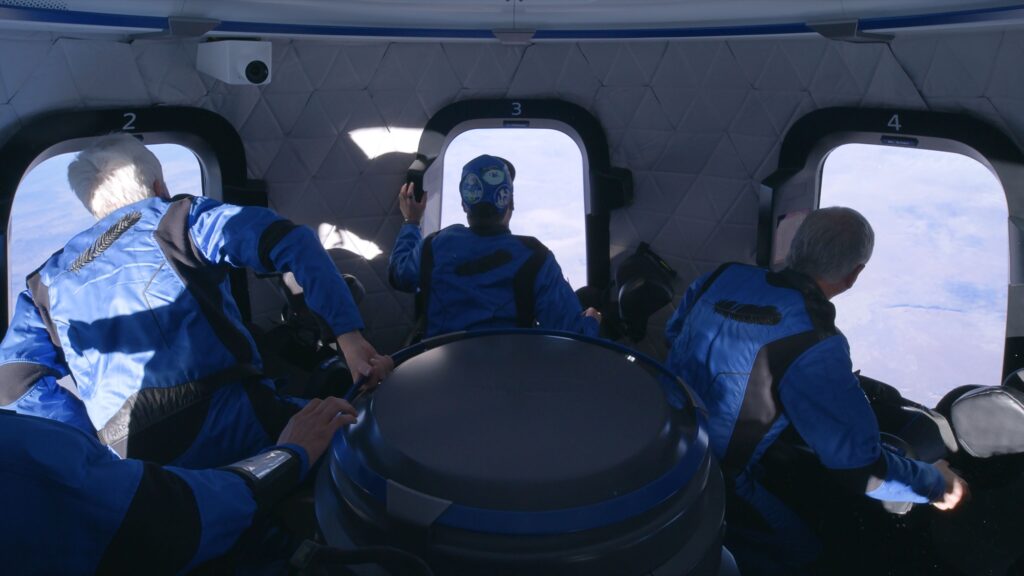On June 21, 2004, a rocket-powered vehicle called SpaceShipOne, designed by aviation legend Burt Rutan and funded by Microsoft co-founder Paul Allen, soared into clear skies above the Mojave Desert in California. As the first privately developed crewed vehicle to reach space, it was widely viewed as a harbinger of a new era when human spaceflight would be relatively commonplace and accessible.
Twenty years later, many are still waiting on that new era. SpaceShipOne was built to win the $10 million Ansari X Prize, intended to stimulate the development of reusable vehicles that would reduce the cost of space access. It primarily led to the creation of Virgin Galactic and its SpaceShipTwo suborbital vehicle.
On June 8, SpaceShipTwo is scheduled to make its final commercial flight. The vehicle, called VSS Unity, will take off from New Mexico’s Spaceport America carrying three private astronauts and a Turkish researcher. Virgin Galactic will retire the vehicle after that Galactic 07 mission.
Virgin Galactic announced months ago that it would phase out Unity less than a year after its first commercial flight so it could focus its resources on its next-generation suborbital vehicle, the Delta class. It will look like SpaceShipTwo but is designed, the company says, to be far cheaper and easier to operate and also to be manufactured in volume.
The company is betting its future on the Delta class, offering rosy forecasts of hundreds of flights a year and, eventually, a fleet of spaceplanes that can operate from New Mexico and elsewhere. That all-in move, though, requires ending SpaceShipTwo flights now, creating a hiatus in commercial service that will last until at least 2026, when Virgin currently predicts it can start flying customers on Delta vehicles.
Virgin’s pause comes as Blue Origin finally resumed crewed flights of its New Shepard vehicle in May, more than 21 months after the previous launch with people on board. That gap was caused by a mishap on a payload-only flight in September 2022, but even after the company resumed uncrewed flights last December it took five months to start flying people again.
Industry officials believe Blue Origin remains committed to flying people on New Shepard, but the company has offered few details about how frequently it will do so. With other, bigger projects competing for attention, like the New Glenn launch vehicle and Blue Moon lunar lander, increasing New Shepard’s flight rate is unlikely a high priority at the company.
So, the door to a new spaceflight era that SpaceShipOne appeared to open 20 years ago is barely ajar today. It’s a disappointment given the optimistic predictions of the mid-2000s when people expected thousands a year would be flying by now at prices similar to a high-end cruise.
But the true believers of space tourism still believe. The one-day Space Tourism Conference, held in Los Angeles May 22, attracted a few hundred people working in the field or wanting to get involved. The focus of the event was more on the experience than the technology, with sessions on branding and marketing as well as developing “creature comforts” for future space tourists, like cocktails optimized for zero-g.
The one person at the event who had been to space, though, advised attendees to keep it simple. “For me, the high point of my spaceflight was the view, and you don’t have to bring too much to be able to appreciate that,” said George Nield, the former head of the FAA’s commercial space office who flew on New Shepard in 2022.
He was on a panel where the moderator asked participants what they would pack if they got to go to space. “Bring some keepsakes and things to connect you with family and friends and special moments in your life, but don’t try to do too much,” he advised.
That’s good advice not just for space tourists but also for the space tourism industry. After all these years of waiting, focus on the basics of flying — safely and regularly — and only then worry about things like the drink menu.
This article first appeared in the June 2024 issue of SpaceNews Magazine.
>>> Read full article>>>
Copyright for syndicated content belongs to the linked Source : SpaceNews – https://spacenews.com/space-tourism-dreams-live-on/
